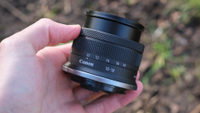Digital Camera World Verdict
I like the super-wide viewing angles delivered by the Sigma 10-18mm F2.8 DC DN C, making it ideal for landscapes, cityscapes, architectural interiors and even vlogging. The fairly fast and constant f/2.8 aperture rating also adds astrophotography to the to-do list. It’s a very welcome addition to the very limited range of own-brand Canon lenses for its APS-C format EOS R system cameras but I miss the optical stabilization of Canon’s 10-18mm lens, which is cheaper to buy, smaller and lighter, and even features a 0.5x macro facility.
Pros
- +
Ultra-wide viewing angles
- +
Fast and constant f/2.8 aperture
- +
Good build quality and performance
- +
Weather-sealed mount, hood included
Cons
- -
No optical stabilizer
- -
Heavier and not retractable
- -
Lacks the Canon’s macro facility
Why you can trust Digital Camera World
At the time of testing this new Sigma lens, Canon is currently offering four APS-C format mirrorless EOS R system cameras, but only four dedicated APS-C format lenses to go with them. Naturally, you can use full-frame compatible ‘RF’ lenses on these cameras but, even so, all four of Canon’s ‘RF-S’ lenses are zooms with fairly slow aperture ratings, shrinking to f/6.3 or f/7.1 at the long end. With Canon keeping such tight control over its EOS R tech since the system was launched back in 2018, only ‘dumb lenses’ with no autofocus or electronic communication with the camera body were available until recently. But that’s changed with the launch of a new brace of Sigma lenses.
Sigma now offers 10-18mm and 18-50mm AP-S zooms in Canon RF-S mount, both with a relatively fast and constant f/2.8 aperture, from its ‘Contemporary’ line-up. Both lenses are repurposed from original designs that have been available for a while in Fujifilm X, L-mount and Sony E-mount options. Indeed, we’ve already reviewed the Sigma 10-18mm f/2.8 DC DN C in Fuji X mount, and the Sigma 18-50mm F2.8 DC DN C in Canon RF-S mount. More pertinently for this review of the Sigma 10-18mm for Canon users, this ultra-wide-angle zoom goes into direct competition with the own-brand Canon RF-S 10-18mm f/4.5-6.3 IS STM. It therefore aims to be one of the best lenses for the Canon EOS R50 and other APS-C format EOS R system cameras. Canon RF-S mount versions of Sigma’s fast 16mm, 23mm, 30mm and 56mm f/1.4 prime lenses are also in the pipeline – coming soon.
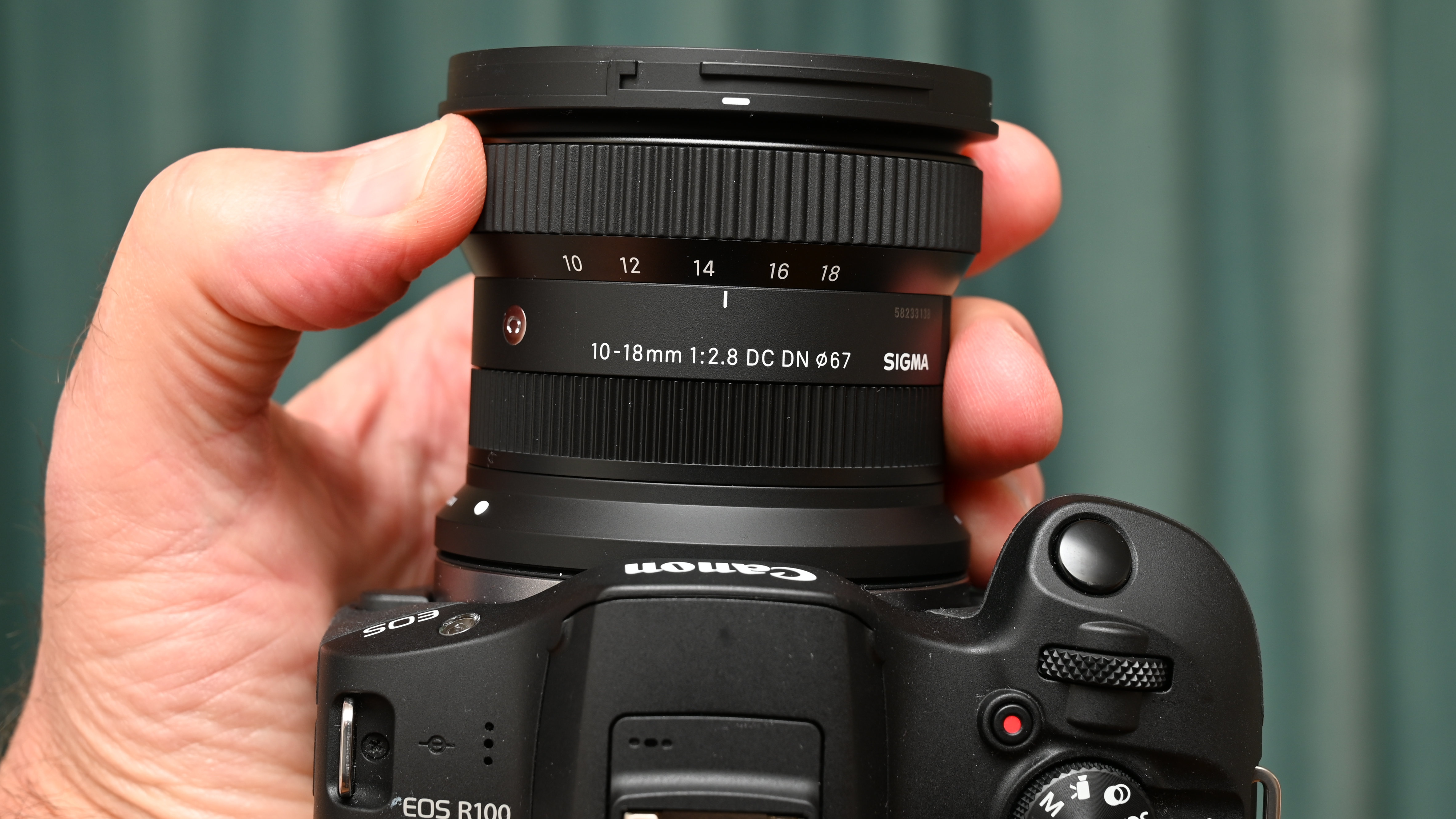
Sigma 10-18mm F2.8 DC DN C: Specifications
| Mount options | Canon RF, Fuji X, Sony E, Leica L |
| Lens construction | 13 elements in 10 groups |
| Angle of view | 109.7 - 76.5 degrees |
| Diaphragm blades | 7 |
| Minimum aperture | f/22 |
| Minimum focus distance | 0.12m (W) 0.19m (T) |
| Maximum magnification | 0.25x (W) 0.14x (T) |
| Filter size | 67mm |
| Dimensions | 72x62mm |
| Weight | 260g |
Sigma 10-18mm F2.8 DC DN C: Price
The Sigma 10-18mm in Canon RF-S mount launched in September 2024 with a retail price of $659/£649. That makes it considerably pricier than the own-brand Canon RF-S 10-18mm, which sells for around $329/£379, although you have to buy Canon’s hood separately, whereas it’s included with the Sigma. Even so, the Sigma’s higher price is entirely understandable given its faster, constant aperture rating of f/2.8 compared with the Canon’s variable f/4.5-6.3. It's more like a ‘trinity zoom’ wide-angle lens for APS-C cameras. The companion Sigma 18-50mm F2.8 DC DN C standard zoom costs around $589/£479 but Sigma is offering a money-saving ‘Capture Plus twin-lens kit’, if you want both lenses, which sells for around £999 in the UK. I’d expect other world regions to follow suit.
Sigma 10-18mm F2.8 DC DN C: Design & Handling
Before I jump into the Sigma’s design and handling, I’ll start off with what I like about the competing Canon RF-S 10-18mm f/4.5-6.3 IS STM lens. The Canon is remarkably compact and lightweight. Thanks to its retractable design, it shrinks to just 69x45mm for stowage. It’s also remarkably featherweight, at a mere 150g, shedding a few grams with a plastic rather than metal mounting plate. The Canon also features 4-stop optical image stabilization, which I feel is a bonus considering that the Canon EOS R7 is so far the only APS-C format EOS R system to have IBIS (In-Body Image Stabilization). It’s sadly lacking in the EOS R100, EOS R50 and EOS R10 cameras. You could argue that optical stabilization isn’t a ‘must-have’ on such a wide-angle lens but I find it very useful for the likes of handheld shooting of architectural interiors in venues like museums and cathedrals, where tripods are prohibited.
Another Canon upside is that you can switch to manual focusing and get in really close, with up to 0.5x macro magnification, but I can live without that. What I don’t like about the Canon lens is its relatively slow f/4.5-6.3 variable aperture rating, that its plastic mounting plate feels less solid and robust than a metal one, and that it lacks any weather-seals.
It also annoys me that, apart from up-market L-series lenses, Canon generally sells its lens hoods separately rather than including them with lenses. In this case, the ‘optional’ EW-53B hood (I’d call it essential for an ultra-wide lens) costs an additional $29/£19. All of those minus points are addressed in the Sigma lens.
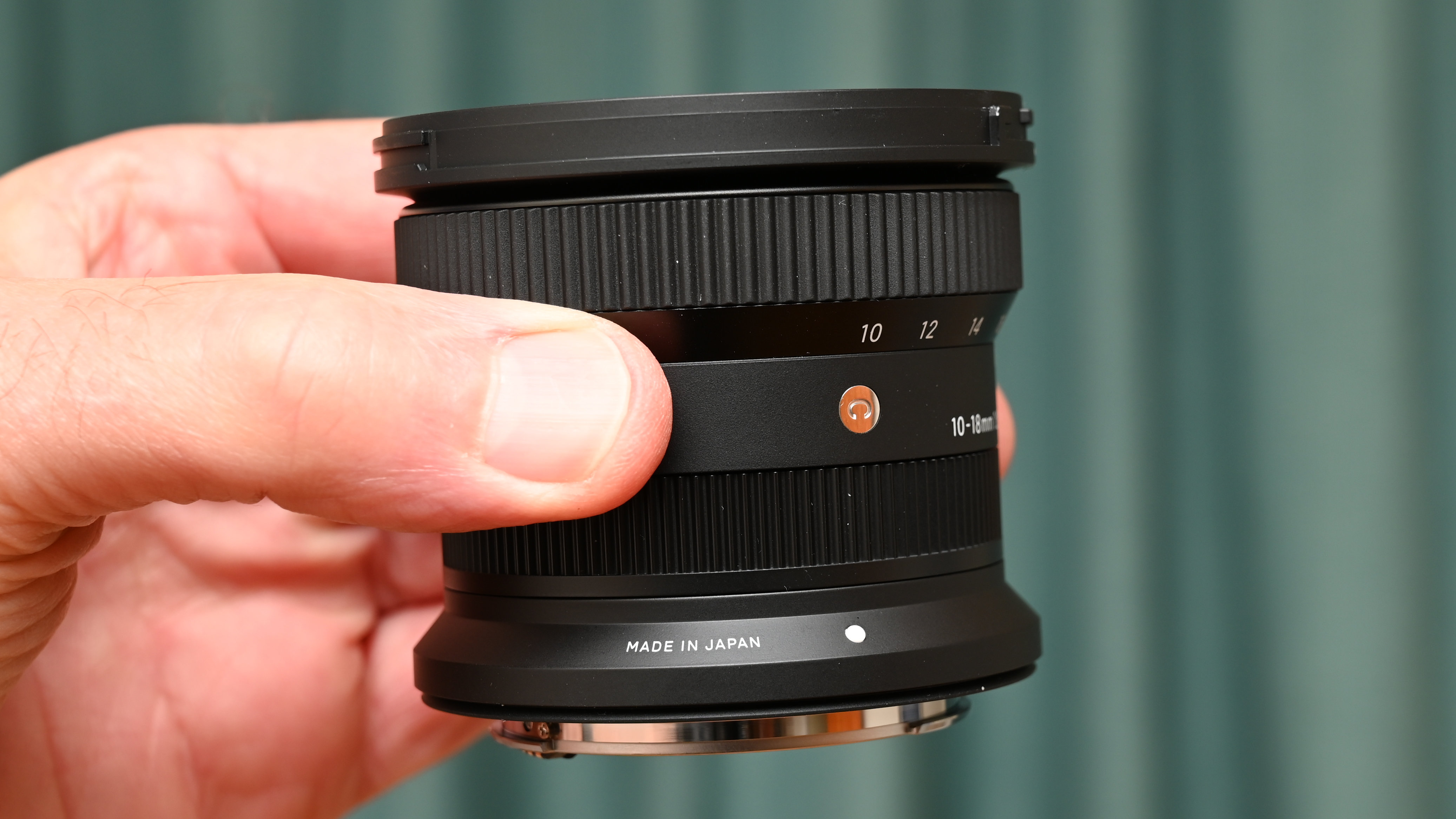
While the constant f/2.8 aperture rating is a key advantage over the Canon lens, the Sigma is similarly strong when it comes to the overall design. The optical path includes four aspherical elements, three top-grade FLD (‘Fluorite’ Low Dispersion) elements and one SLD (Special Low Dispersion) element. All in all, there are 13 elements arranged in 10 groups. Autofocus is driven by a fast and near-silent stepping motor, and focusing is fully internal, so the front element neither extends nor rotates. The avoidance of rotation is an important factor when using filters like ND grads for shooting landscapes. Speaking of which, the lens has a medium-sized 67mm filter attachment thread.
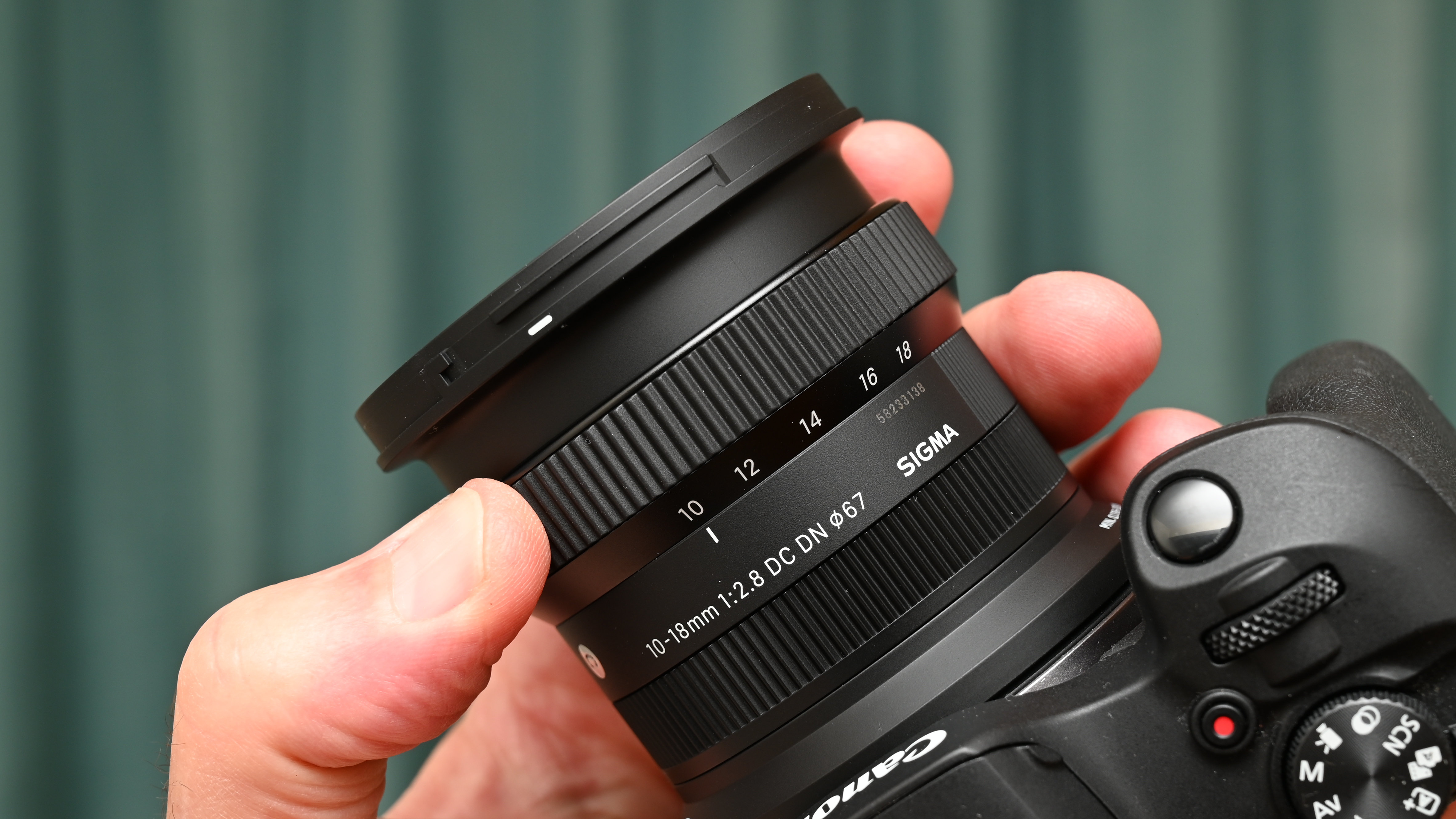
The physical length of the lens extends slightly as you zoom from the 18mm setting down to 10mm, but it’s pretty minimal and any change in the center of gravity is imperceptible. The size and weight of the lens are 72x62mm and 260g, so it’s bigger than the Canon lens (when the latter isn’t retracted) and heavier as well. Even so, it’s very compact and lightweight for such an ultra-wide-angle lens. Build quality feels more solid than in the Canon lens, particularly as it has a plated brass mounting plate rather than a plastic one, and the mount features a weather-seal that’s lacking in the Canon lens. There’s also a fluorine coating on the front element, along with Sigma’s usual Super Multi-layer Coatings to reduce ghosting and flare.
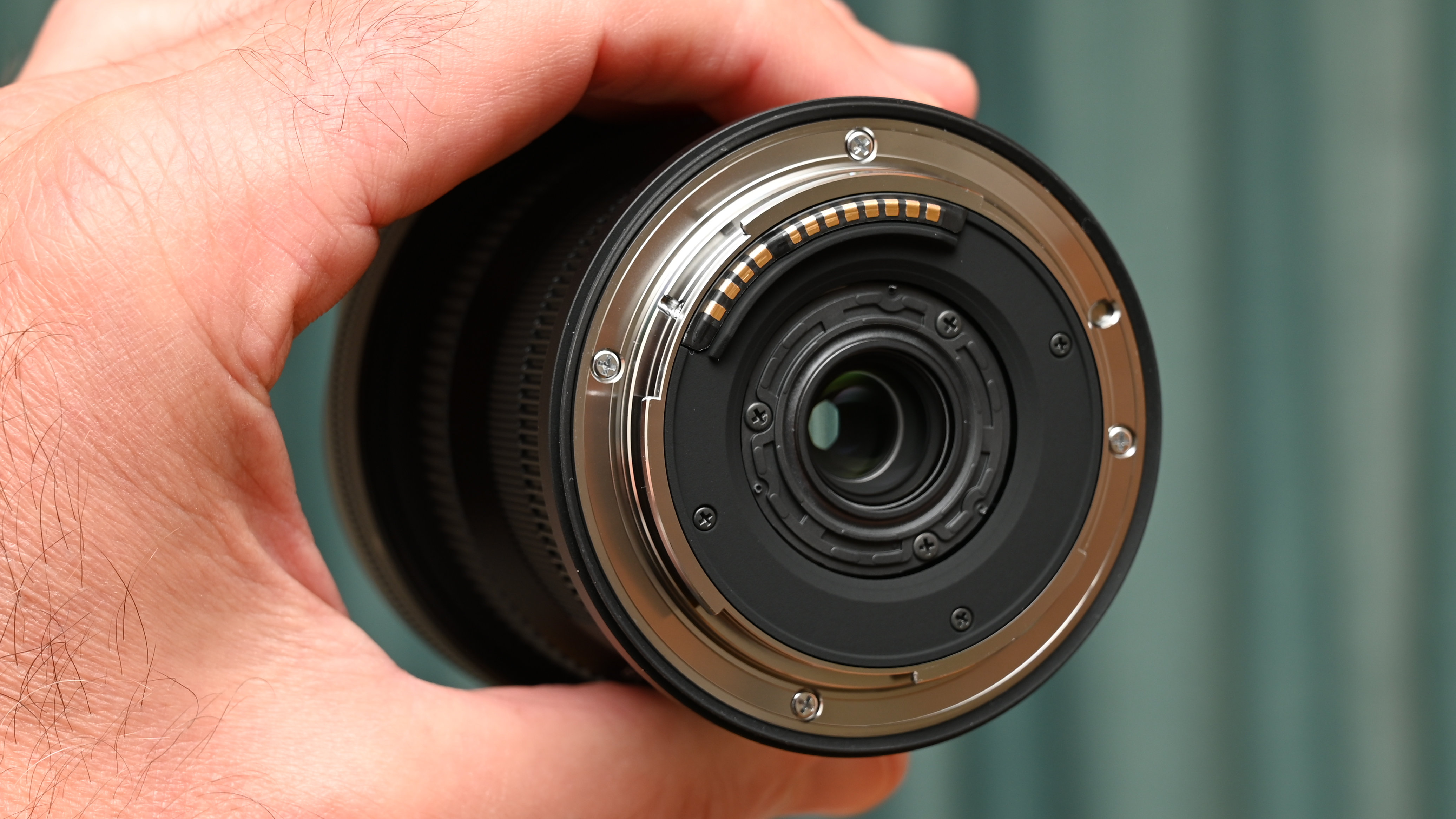
Handling feels refined. The zoom ring operates very smoothly and the electronically coupled manual focus ring enables precise adjustments. I initially found the petal-shaped hood a bit fiddly to attach and remove, compared with most lenses that have a bayonet-fit hood, but I got the hang of it pretty quickly.
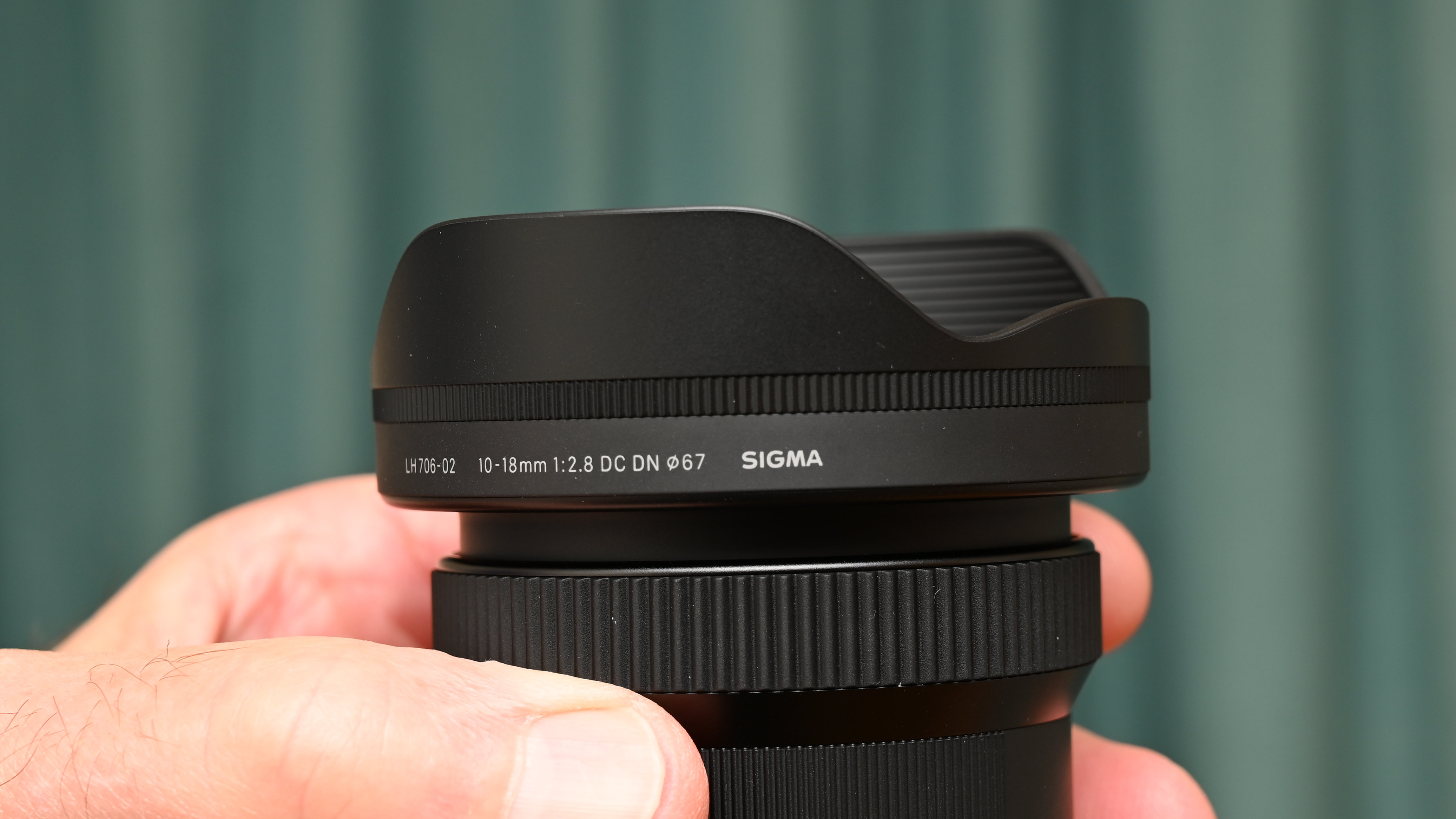
Sigma 10-18mm F2.8 DC DN C: Performance
Ultra-wide viewing angles coupled with a wide aperture can make sharpness a real challenge. Sure-enough, sharpness across the whole frame at f/2.8 is good rather than entirely great, at all zoom settings. Narrow the aperture by a single f/stop to f/4 and center-sharpness comes on strong. At 10mm, the Sigma is much sharper than the Canon lens across almost the whole image frame, and about equal at the extreme edges and corners. At mid-zoom settings, both lenses return similar levels of sharpness, but the Sigma hangs onto sharpness better at the long end.

The pair of shots above and below demonstrate the overall zoom range, taken at the shortest and longest focal lengths of 10mm and 18mm. However, with the lack of optical image stabilization, I had to boost the ISO setting of the non-stabilized Canon EOS R100 camera body to avoid camera-shake, especially at the long end of the zoom range, being prohibited from using a tripod in the cathedral. That wouldn’t have been a problem with the optically stabilized Canon lens.

Both lenses do well to keep color fringing to fairly low levels, although the Canon wins out in this respect at the long end of the zoom range. It’s a bit of a moot point, as automatic in-camera correction is available for both lenses. The same goes for distortion. The Sigma lens gives very noticeable barrel distortion at 10mm, rather less so at 12mm, almost none at 14mm and a touch of pincushion at 18mm. By contrast, the Canon lens delivers so much distortion that it’s basically unusable without in-camera correction, on which it relies completely. Switch it off when processing RAW files and the Canon lens gives an almost fisheye look to images. I suspect the effect of in-camera correction is why the effective maximum angle of view is quoted as 107.5 degrees for the Canon lens, and a larger 109.7 degrees for the Sigma, despite them both having the same minimum focal length.

Sigma 10-18mm F2.8 DC DN C: Sample Images
The following gallery of example shots were taken at the Cathedral and Bishop’s Palace gardens in Wells, the smallest city in England, UK.













Sigma 10-18mm F2.8 DC DN C: Lab Results
We run a range of lab tests under controlled conditions, using the Imatest Master testing suite. Photos of test charts are taken across the range of apertures and zooms (where available), then analyzed for sharpness, distortion and chromatic aberrations.
We use Imatest SFR (spatial frequency response) charts and analysis software to plot lens resolution at the center of the image frame, corners and mid-point distances, across the range of aperture settings and, with zoom lenses, at four different focal lengths. The tests also measure distortion and color fringing (chromatic aberration).
Sharpness:
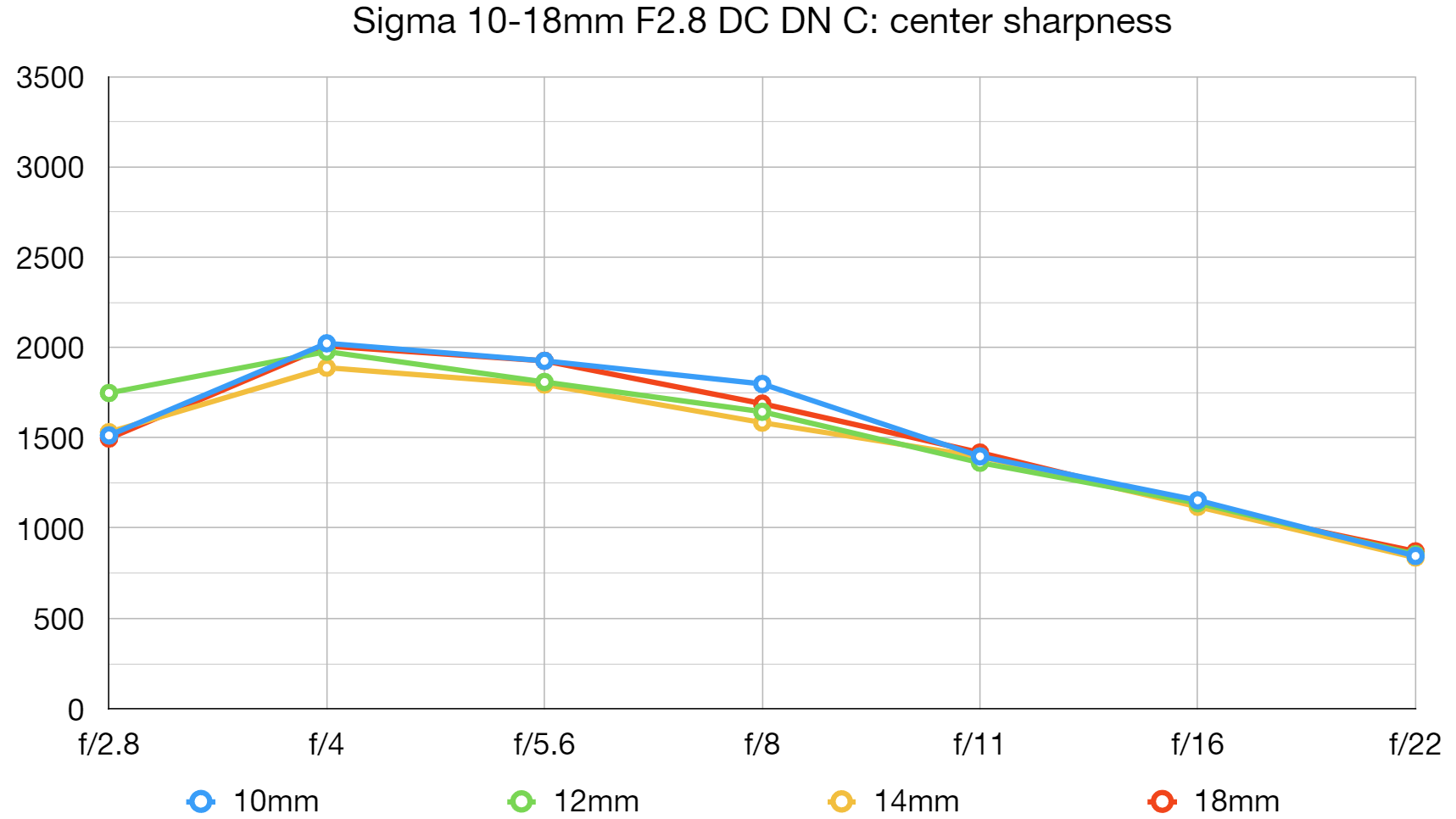

Levels of center-sharpness are mostly excellent although, as I’d expect from an ultra-wide-angle zoom lens with a relatively fast aperture of f/2.8, they drop off when shooting wide-open, throughout the zoom range. Edge/corner-sharpness also drops off at the longest zoom setting of 18mm.
Fringing:
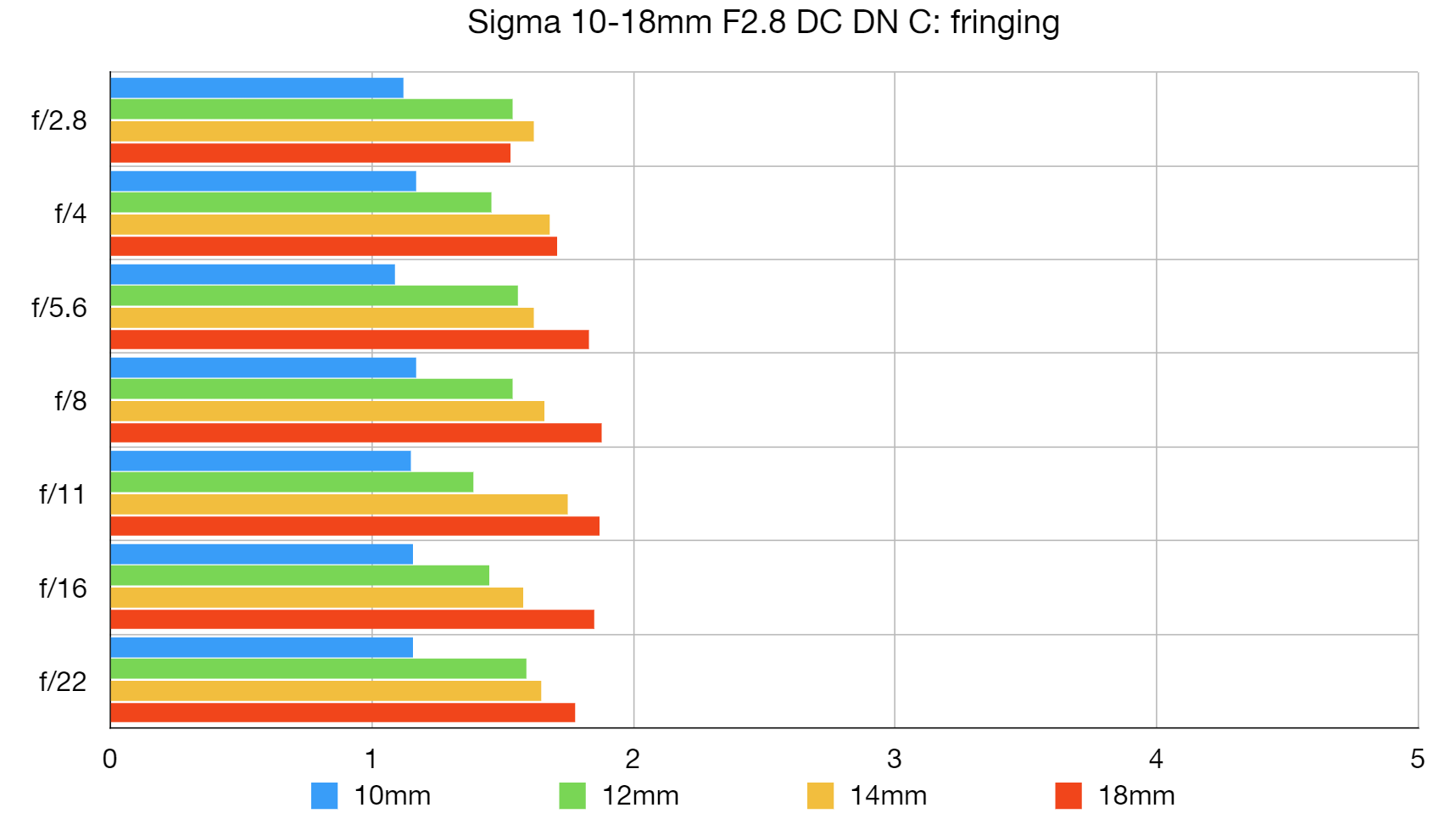
Control over color fringing is pretty good, even when uncorrected in-camera, getting marginally worse at longer zoom settings.
Distortion:
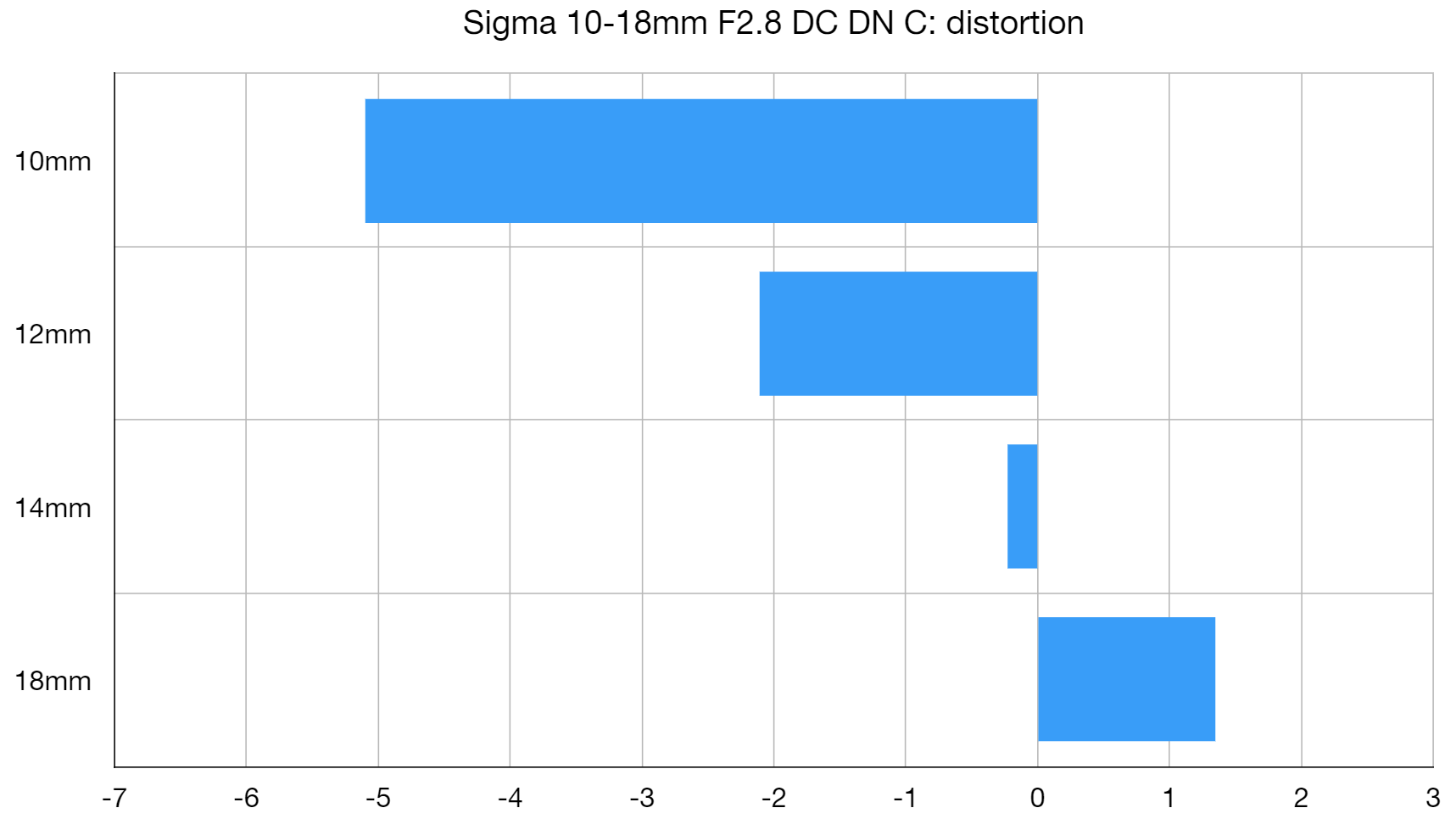
There’s very noticeable barrel distortion at the shortest zoom setting of 10mm but it’s better controlled in the 12-14mm sector, and there’s a touch of pincushion distortion at 18mm. Even so, native distortion is rather less than I’ve seen in many recent lenses designed for mirrorless cameras, which rely almost entirely on automatic in-camera correction.
Sigma 10-18mm F2.8 DC DN C: Verdict
I feel that the choice isn’t altogether straightforward between this Sigma lens and the competing own-brand Canon RF-S 10-18mm. I like the optical image stabilization of the Canon lens but, when it comes right down to it, I prefer the Sigma’s faster, constant f/2.8 aperture and its better build quality with a brass rather than plastic mounting plate. Overall image quality is better from the Sigma lens too and, while it’s significantly more expensive to buy, it’s still a bargain at the price. Long story short, I’m sold on the Sigma!
| Features | The fast and constant f/2.8 aperture is a key feature but there’s no image stabilization. | ★★★★ |
| Design | The design looks pretty basic but the lens is packed with good glass and fast autofocus. | ★★★★ |
| Performance | It’s a great performer and doesn’t rely as heavily on in-camera correction as some. | ★★★★★ |
| Value | For an ultra-wide-angle, constant-aperture f/2.8 zoom it’s great value for money. | ★★★★★ |
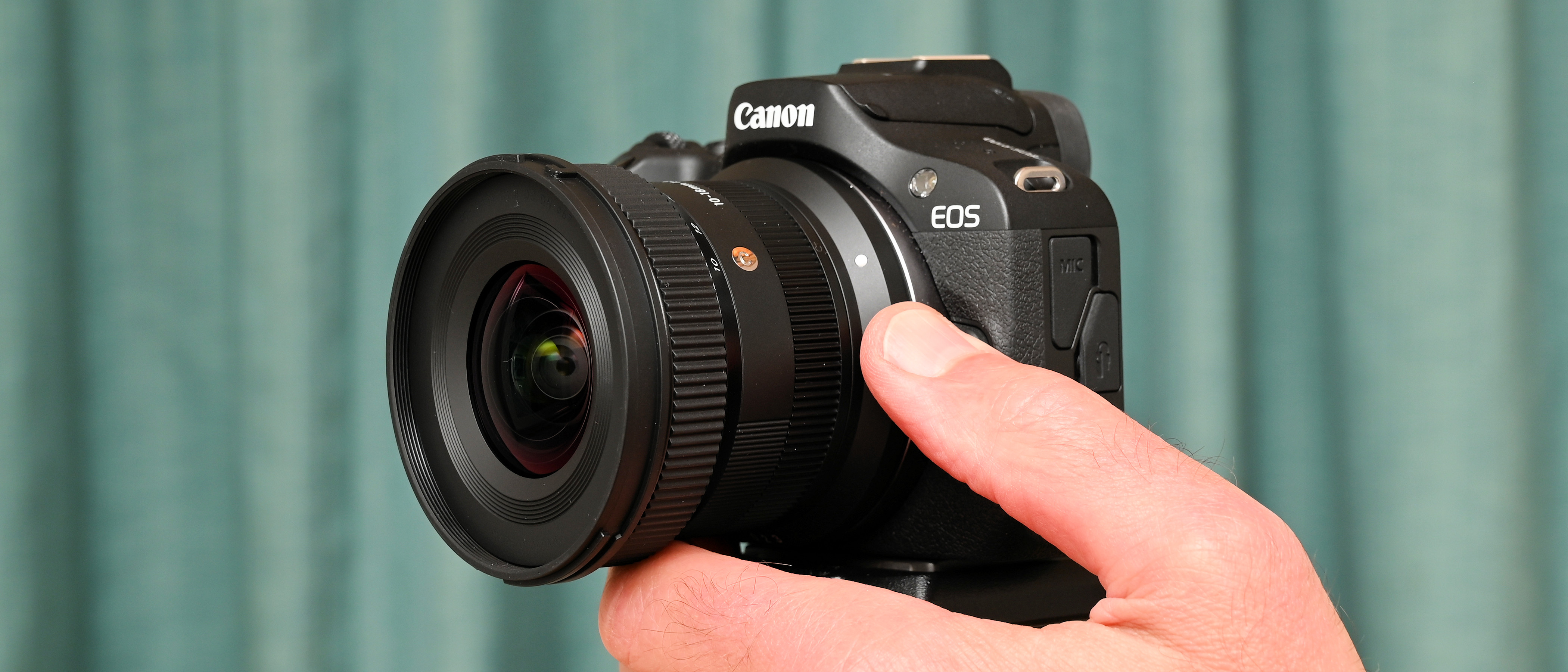
Should you buy the Sigma 10-18mm F2.8 DC DN C?
✅ Buy this...
- You want an ultra-wide-angle zoom that works well for astrophotography as well as for landscapes, cityscapes, architectural interiors, vlogging and the like.
- You need a relatively fast aperture for freezing movement under low lighting, or for getting a moderately tight depth of field for close-ups.
🚫 Don't buy this...
- You’d rather have optical image stabilization for handheld shooting in venues like cathedrals and museums, where tripods are prohibited.
- You feel a need for the 0.5x macro facility of the competing Canon 10-18mm, which is available in manual focus mode for extreme close-ups.
Alternatives
The Canon RF-S 10-18mm f/4.5-6.3 IS STM has a much slower, variable aperture rating as you extend through the zoom range but it’s cheaper to buy and boasts optical image stabilization, as well as a 0.5x macro facility in manual focus mode.
If you’d prefer a prime lens, the Canon RF 16mm f/2.8 STM lens is incredibly small and lightweight, as well as being compatible with both full-frame and APS-C format Canon EOS R system cameras. That’ll come under fire when Sigma launches its faster 16mm f/1.4 Contemporary lens in RF-S mount.
Matthew Richards is a photographer and journalist who has spent years using and reviewing all manner of photo gear. He is Digital Camera World's principal lens reviewer – and has tested more primes and zooms than most people have had hot dinners!
His expertise with equipment doesn’t end there, though. He is also an encyclopedia when it comes to all manner of cameras, camera holsters and bags, flashguns, tripods and heads, printers, papers and inks, and just about anything imaging-related.
In an earlier life he was a broadcast engineer at the BBC, as well as a former editor of PC Guide.

